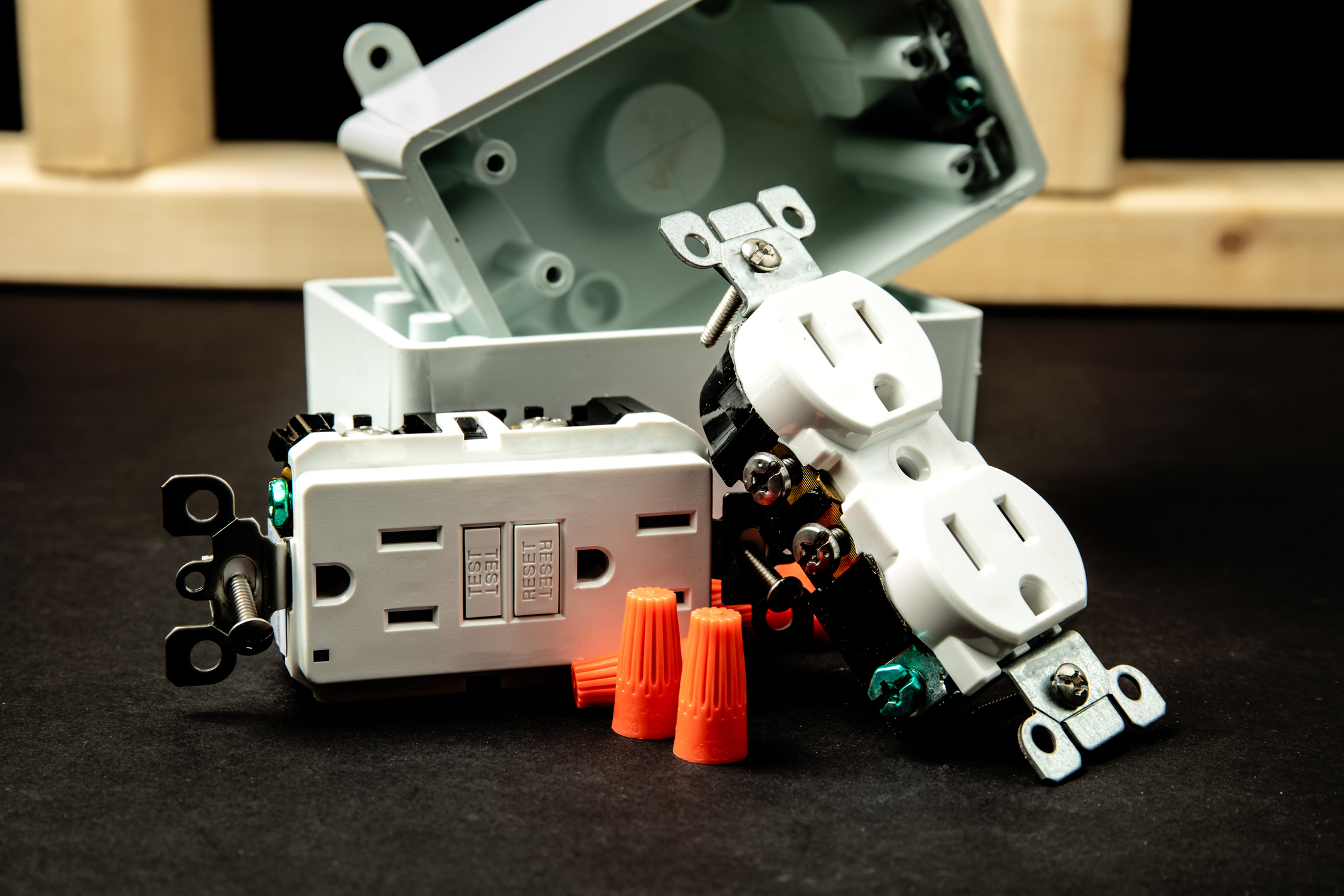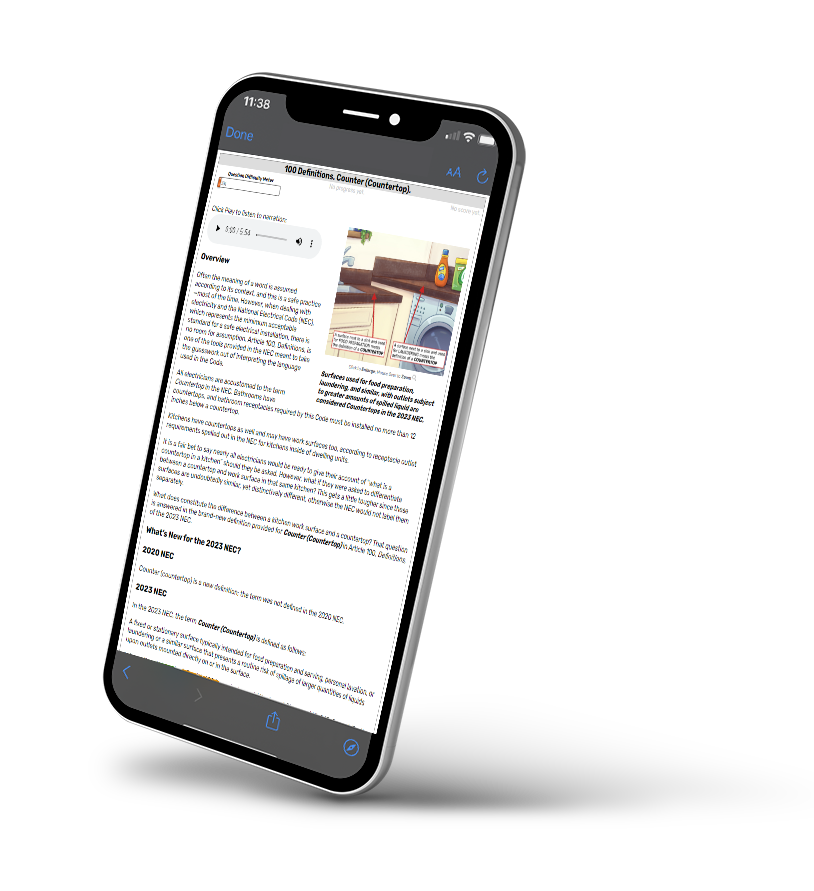2023 NEC Section 210.8(B): GFCI Protection, Other Than Dwelling Units

By: Robert Key | Apr 03, 2023
Despite the 2023 National Electrical Code’s (NEC) launch, depending on where you work, you may still be using a prior edition. Here in North Carolina, single-family dwellings use the 2017 NEC, with the 2020 edition used for commercial projects only.
The 2020 (NEC) brought major changes to ground-fault protection requirements covered in Section 210.8, such as ground-fault circuit interrupter (GFCI) protection requirements for 250-volt receptacles in dwelling units.
Now, for the 2023 Code cycle, Section 210.8(B) Ground-Fault Circuit-Interrupter Protection for Personnel, Other Than Dwelling Units has expanded further, with three new locations where GFCI protection is required:
- Areas with sinks and permanent provisions for food preparation, beverage preparation, or cooking (formerly included as part of kitchens in the 2020 NEC)
- Buffet serving areas with permanent provisions for food serving, beverage serving, or cooking
- Aquariums, bait wells, and similar open aquatic vessels where receptacles are within 6 feet of the top inside edge or rim or from the conductive support framing
Now there are 15 total locations where we must provide class A GFCI protection.
The 2020 NEC list of GFCI-protected locations had some gaps when it came to potentially hazardous locations, such as receptacles near beverage areas located outside of a commercial kitchen. Class A is the type used in most outlets, where the current trip level is 4-6 milliamps. Class B protection cannot be used where class A protection is required. Two of the locations have been revised for 2023 as well:
(2) Kitchens (formerly Kitchens of areas with a sink and permanent provisions for either food preparation or cooking)
(7) Sinks where receptacles or cord-and-plug-connected fixed and or stationary appliances are installed within 1.8 meters (6 feet) from the top inside edge of the bowl of the sink
In addition to the new locations, 210.8(7) now declares that both receptacles installed within 6 feet of the top inside edge of a sink and receptacles utilized by cord-and-plug connected fixed or stationary appliances where the appliance itself is within 6 feet of the sink require GFCI protection. That is certainly new for the Code!
210.8(B) Exceptions
Section 210.8(B) of the NEC has always had a number of exceptions for each specific location or situation. However, this changed for the 2023 Code cycle.
For 2023, all exceptions are grouped together at the end of Section 210.8(B). The exceptions also apply to all locations in 210.8(B). In my opinion, this is a significant improvement.
In my experience, it is tougher to sort through and apply a code exception when it only applies to the listed location. By grouping them all together at the end of the section and letting them apply broadly to all locations in the list, the exceptions are much easier to read and apply.
Here is one example of the old way from the 2020 NEC, Section 210.8(B):
(3) Rooftops
Exception: Receptacles on rooftops shall not be required to be readily accessible other than from the rooftop.
(4) Outdoors
Exception No. 1 to (3) and (4): Receptacles that are not readily accessible and are supplied by a branch circuit dedicated to electric snow-melting, deicing, or pipeline and vessel heating equipment shall be permitted to be installed in accordance with 426.28 or 427.22, as applicable.
Wait, where does the exception apply? It could be applied to a rooftop or outdoors, but not in a garage.
In the 2023 NEC, the exceptions to the 15 locations other than dwelling units are grouped together and they apply to all locations named in the section. This short list from the 2023 NEC is just a brief paraphrase of the exceptions. Please consult your copy of the NEC for a more concrete answer.
Section 210.8(B) Other Than Dwelling Units Exceptions – From the 2023 NEC
- Receptacles that are not readily accessible and are supplied by a branch circuit dedicated to electric snow-melting, deicing, or pipeline and vessel heating equipment
- Receptacles on rooftops shall not be required to be readily accessible other than from the rooftop
- Receptacles or cord-and-plug-connected fixed and stationary appliances installed within 1.8 meters (6 feet) from the bowl of a sink is not required to be GFCI protected in industrial establishments where only qualified personnel have access, or an assured equipment grounding conductor program
- Receptacles or cord-and-plug-connected fixed and stationary appliances installed within 1.8 meters (6 feet) from the bowl of a sink is not required to be GFCI protected in industrial laboratories where they are used to supply equipment where removal of power would introduce a greater hazard
- Receptacles in patient bed locations of Category 2 (general care) or Category 1 (critical care) spaces of health care facilities
- Listed weight-supporting ceiling receptacles installed to supply a ceiling luminaire or ceiling-suspended fan shall be permitted to omit GFCI protection, unless it has a built-in receptacle outlet.
Weight-supporting ceiling receptacles (WSCR) were referred to as listed locking support and mounting receptacles in the previous version of the Code.
Now the exceptions for GFCI protecting receptacles in locations other than dwelling units are easier to follow because it is clear that exceptions apply to any applicable location(s) listed in Section 210.8(B). I think this is a logical change and easier to navigate. It is also consistent with the NEC writing style manual.
Don’t forget that if Spanish is your primary language, the NEC is available in that language as well, which could prove to be helpful. But remember that what’s listed in the NEC can be the minimum amount of protection required. You can add GFCI protection to other areas, and it is (fairly) easy and (relatively) inexpensive to do so. Whatever edition of the code you are using, learn it! Own it!


Question- Industrial application:
Stationary fixed equipment (fluid process and fill application) 250v and under, fed from twist lock supported drop cords from ceiling. Male female cord cap connections accessible and used as LOTO disconnect only by maintenance personal approx. 6′ elevated.
Would this application require GFCI protection in proximity to a fluid process application (filler)?
Do you have anything about when this was Revised for Arkansas?
Arkansas follows NEC with certain Amendments. It was revised in 2023. Please take a look here:
https://up.codes/codes/arkansas
Thanks
Is it required to have a gfci breaker on 3 phase mixer. Inspector is calling me on this. It has a cord and is plugged into the wall. Twist lock receptacle